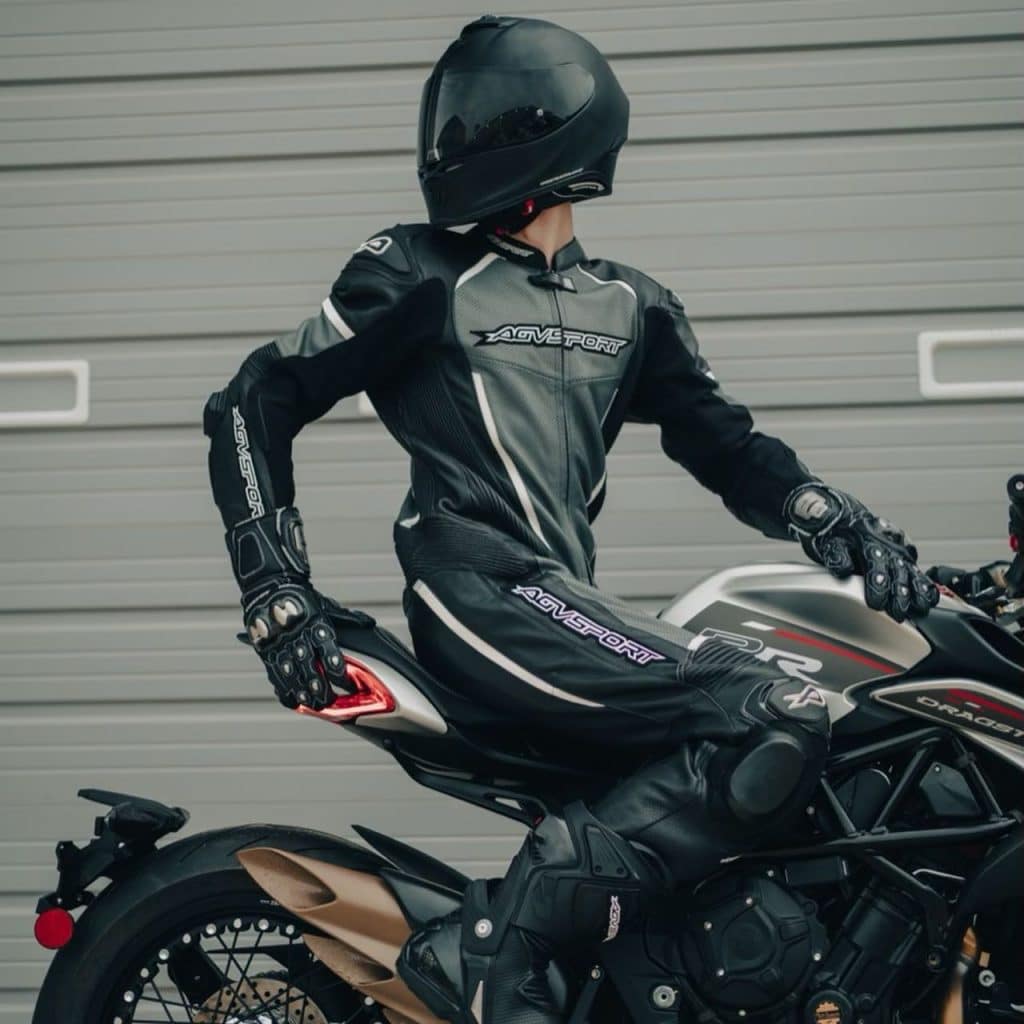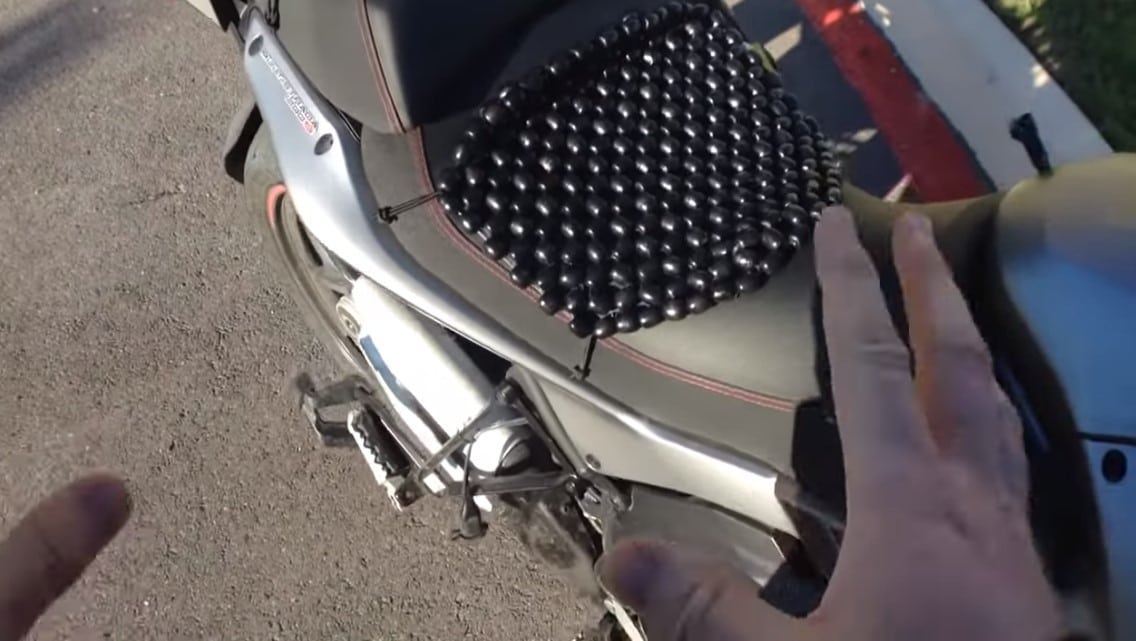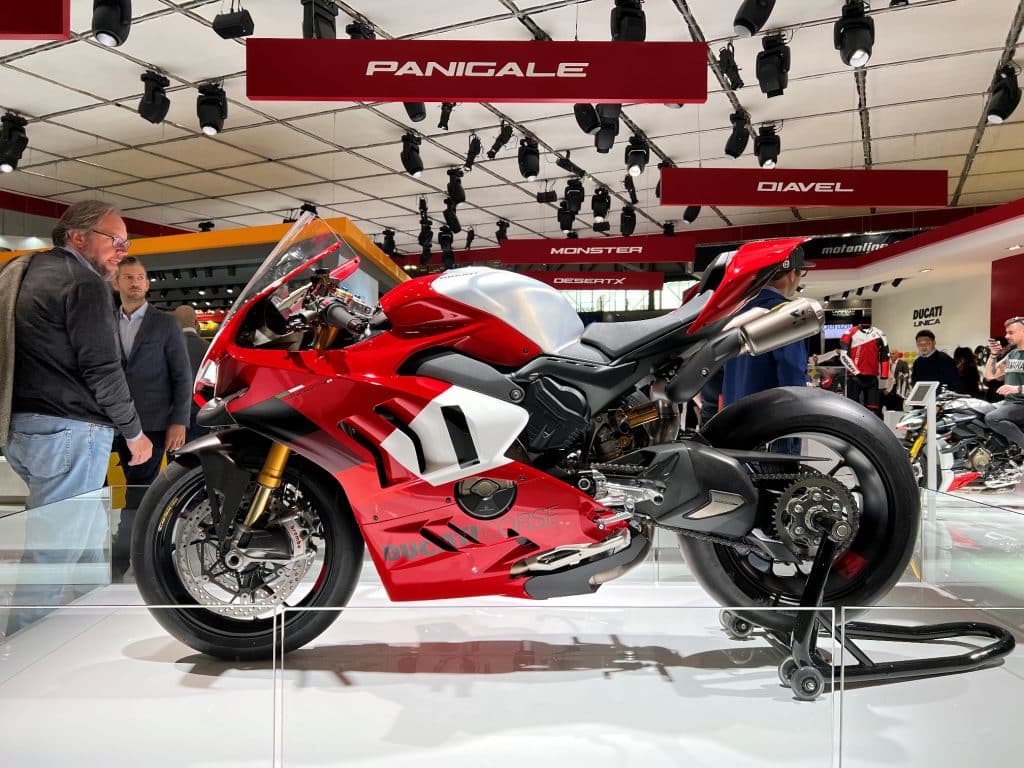Riding a sportbike brings its fair share of challenges, from wrist and shoulder pain to discomfort in your back and legs. After all, only a few parts of your body make contact with the motorcycle: your hands, your butt, and your feet. And if you can make sure that these three areas are comfortable, then you’ve pretty much got half of the battle won.
Of all the components that make up a sportbike, the seat plays a paramount role in determining comfort levels, particularly crucial during extended journeys along the Pan-American Highway—the world’s longest motorable road, stretching an impressive 30,000 miles (a fact I couldn’t resist mentioning) and renowned for its challenging twists and turns. Equally, when navigating short city bursts on the iconic two-lane Going-To-The-Sun Road.
The good news? You have the option to customize your seat for optimal comfort, ensuring a smoother and more enjoyable ride.
Best Motorcycle Seat Comfort Accessories
Scroll right to explore various buying options, compare prices, and potentially unlock exclusive discounts from sellers:
Product Name Category Dimension Check & Shop Now
Speedmetal Best Gel Seat Pad SM, MD, LG, XL RevZilla | CycleGear
Aftermarket/OEM Comfort Seats Best Sportbike Seats All Models RevZilla | Amazon
SKYJDM Best Foldable Seat Cushion 2.12 Pounds Amazon
WDG 3D Honeycomb Best Shock Absorption Seat Cushion 13.7 x 15.7 Inches Amazon
Formosa Cover Best Wood Beaded Seat Cover 11" D x 15" W Amazon
Cekell Quick-Drying Best Summer Seat Cover 4.9 Ounces Amazon
7 Tricks to Make Your Sportbike Seat More Comfortable

Beyond the exhilarating adrenaline rush at the California Superbike School or Sandy Hook Speedway (because, let’s face it, the thrill of racing is timeless), I occasionally seek the joy of adventure on one of my sportbikes—from the nimble Kawasaki Ninja 400 to the powerhouse BMW S1000RR, with pit stops at Yamaha MT 07, Honda CBR600, and Yamaha R1 along the way. It’s something I’ve been doing for close to 50 years now, yet I’ll be the first to admit that sportbike seats are not the most comfortable.
The uncomfortable reality led me on a search for solutions, a journey that began with my first sportbike, the Italian Malaguti, in France in 1972. Fast forward through the years, and my pursuit of a more comfortable ride has been an ongoing experiment. With these 7 proven tricks, you can significantly improve your sportbike seat comfort for the long haul.
1. Gear Up Right

The sacred mantra of “All The Gear All The Time” becomes gospel when you straddle a bike—full protective gear is your unwavering commitment. Beyond the obvious shelter in case of a slide, let me impart a golden nugget: the influence of proper riding gear extends far beyond mere protection. It wields the power to dictate your comfort levels and trust me, the impact is profound.
Invest in motorcycle pants that snugly embrace your form. Leather reigns supreme, especially on the unforgiving track. Its abrasion resistance transforms it into a shield during high-speed crashes, standing resilient where other materials may falter. Besides, it’s treated to be water-resistant, breathable, or infused with other desirable features, offering not just protection but a statement of sophistication.
But let me not overlook the breathability factor; for those extended summer escapades, my preference tilts towards the comfort of textile or Kevlar motorcycle pants—embracing the casual allure while cruising through endless miles under the sun.
2. Embrace Seat Pads
Learning how to make a sportbike more comfortable comes at no expense in knowledge, but when the focus sharpens on enhancing the throne—the seat—seat pads stand out as the most economical solution. Not to cast shadows on my trusty green Kawi, but even on its less forgiving saddle, these pads, priced under $50, introduced a realm of comfort that surpassed all my expectations.
Popular motorcycle seat pad designs include:
- Air/water-filled pads for adjustability and pressure distribution.
- Gel cushion pads for comfort, but they may become stiff in lower temperatures.
- Foam seat pads, including memory foam, which doesn’t leak like water, and gel-filled pads.
- Sheepskin covers for temperature control and sweat absorption, preventing “monkey butt.”
The intent? To gift riders a softer, better-ventilated perch, aspiring to redefine the contours of comfort. Yet, a word of caution in this journey to cushioned bliss—beware the allure of the “one-size-fits-all” design. Not every saddle finds its perfect match with these pads, and you might find yourself contending with discomfort as the pad engages in a subtle, rebellious dance, shifting around during the unhurried, rhythmic maneuvering through twists and turns.
3. Wooden or Ceramic Beads Wonder

Wooden or ceramic bead seat covers, although providing a hard surface, offer increased airflow and sweat absorption. Comprising many small wooden balls with gaps between them, these bead covers can provide a massaging effect to muscles. However, opinions on their comfort are divisive among riders, with some finding them uncomfortable and others appreciating the increased airflow.
4. Get a New Seat

We all develop a deep bond with our trusted bikes, making the notion of parting ways for a newer model a contemplative decision. Yet, as our steadfast companions continue to weave tales of adventure, the inevitable wear and tear on the seat becomes unmistakable. The remedy? A fresh seat!
Consider not just a replacement but an upgrade, opting for a seat that not only redefines comfort but also adds a touch of style to your ride. Aftermarket and OEM motorcycle comfort seats, born from the hands of experience, promise a superior feel made with premium materials that far surpass the stock counterparts.
Here’s an insightful breakdown of the primary materials used in motorcycle seats:
- Vinyl: Provides an affordable and durable option for motorcycle seats, with resistance to cracking and fading. But quality is key, as subpar choices may lead to premature damage.
- Leather: Embodies supple luxury for motorcycle seats, delivering premium comfort and developing a unique patina over time. But it comes at a higher cost than vinyl and is susceptible to rain damage. Requires proper care with leather conditioners and cleaners.
- Foam: Offers diverse comfort options for motorcycle seats. Polyurethane foam is cost-effective and comes in various densities, although it may not be as comfortable as other choices. Memory foam, on the other hand, conforms to body contours, providing a molded fit and support. May feel dense over time, and is often complemented by other materials.
- Gel Inserts: Serve as an enhanced comfort layer for motorcycle seats. They add extra comfort and relieve pressure during extended rides. Options include fitted gel inserts, seats with pre-fitted gel layers, and generic inserts for customization. Installation is possible on existing seats, although it may require shaving and professional fitting. Be cautious with seats that come with integrated gel pads, as the gel may lose shape and comfort over time.
The choice of the best sportbike seat material depends on your preferences and specific needs. If you’re simply replacing a worn-out stock seat and durability is a priority, I often lean toward the reliability of open-cell polyurethane. It’s a common choice that gets the job done.
But the decision takes an interesting turn when you’re looking to upgrade. For my racing endeavors, I’ve found that a firmer closed-cell polyurethane foam, paired with a slick vinyl seat cover, suits my needs, providing enhanced track performance, even if it means sacrificing a bit of comfort. The thrill of the race makes up for any minor discomfort.
On the other hand, for long-distance touring, adventure riding, and sport-touring journeys, my go-to recommendation is a multi-layer foam and gel seat. This setup, coupled with a vinyl or stock cover, provides a noticeably more comfortable ride over the miles.
Certain dealers, like BMW, like BMW, offer premium seat options that blend polyurethane, memory foam, and gel inserts, along with carefully designed seat covers. Of course, this luxury comes with a price tag, but for those seeking the pinnacle of comfort, it’s worth considering.
When on a budget, you can enhance your sportbike seat’s comfort by adding a gel insert under the cover and even shaving off a portion of the seat for a snug fit. It’s a cost-effective option that doesn’t require a complete foam replacement.
For riders like me who appreciate the aesthetics as much as the ride itself, opting for a leather seat cover and experimenting with a combination of comfort layer materials can result in a bespoke and custom look. It’s a way to add a touch of beauty to your bike and make it uniquely yours.
In the end, the best choice for your motorcycle seat boils down to your riding style, personal preferences, and budget constraints.
5. Re-Cover Your Seat

When it comes to the art of upholstery, I’ll be the first to admit that I prefer leaving it to the experts. If you share my sentiment, then consider seeking the expertise of custom seat manufacturers to breathe new life into your motorcycle seat. By incorporating aftermarket covers and foam inserts, this approach provides a practical and effective solution for boosting comfort.
It’s particularly beneficial for revitalizing an aging or rigid motorcycle seat.
6. Build Your Own DIY Sportbike Seat

For those who enjoy building and customization, creating a DIY motorcycle seat from scratch can be a cost-effective and fun option. It allows you to tailor the seat to your specific needs and preferences, providing a unique touch to their bike.
While I’m not a DIY enthusiast, I once experimented with creating a plywood motorcycle seat, and here’s a simplified process:
- Gather Your Supplies: Duct tape, cardboard, Sharpie, nails, padding, jigsaw, plywood, glue, and a socket set are essential. Collect everything in advance to streamline the project.
- Remove the Current Seat: Undo the bolts holding your current seat in place. Removing side covers provides better access. Keep track of hardware for reassembly. Pull off the seat by applying pressure and pulling from the tail end.
- Determine Ideal Seat Spot: Sit on your bike, adjusting your position to find the most comfortable spot. Take pictures for a different perspective. This information guides the creation of a custom, comfortable seat.
- Outline Your Frame: Use cardboard and a Sharpie to trace the plywood frame’s outline. Cut away excess cardboard, ensuring an accurate template. Mark holes for attachment points.
- Prepare Your Plywood: Cut the plywood using the template. Check the fit on your bike before the final attachment. Consider using bolts for stability or nails for easier disassembly.
- Add Padding: Install at least two layers of padding using materials like carpet padding. Staple the first layer to the plywood; glue subsequent layers. Cut strips for extra protection against sharp edges.
- Upholster the Seat: Use duct tape for a quick and easy final look. Stretch strips lengthwise and widthwise, adding layers from the center out. Wrap tape around the nose of the seat. Alternatively, use leather or vinyl for a more refined finish.
- Mount the Seat to the Bike: Secure the seat with at least five nails as locating pins. For additional stability, connect to brackets with more nails. Confirm the seat’s position by sitting on it before finalizing the attachment.
This DIY project, while not my usual preference, can be completed over a weekend or even in an afternoon, providing a customized touch to your sportbike.
7. Wear Padded Shorts
Here’s another budget-friendly solution for added comfort: wear padded shorts underneath your riding pants. While it might seem unconventional, these shorts, made of skin-friendly materials such as cotton, linen, cashmere, silk, hemp, and wood pulp (avoid those with Polyester, Acrylic, Acetate, Triacetate, and Nylon), remain invisible and surprisingly comfortable during rides.

I've diligently categorized my motorcycle gear recommendations into all available categories, with the aim of providing you with a comprehensive analysis that showcases the absolute best options for all your needs. These items are the culmination of in-depth research, extensive testing, and personal use throughout my vast experience of 50+ years in the world of motorcycling. Besides being a passionate rider, I've held leadership positions and offered consultancy services to reputable companies in over 25 countries. To See Top Picks and the Best Prices & Places to Buy: Click Here! |
FAQs — I Have the Answers!
Q: How Can I Make My Sportbike Seat More Comfortable?
To make your sportbike seat more comfortable, consider adding aftermarket seat pads or cushions, adjusting the seat height, upgrading to a seat with better padding, or customizing the seat with additional foam or gel inserts. Wearing padded riding gear can also contribute to a more comfortable experience.
Q: How Can I Make My Motorcycle Passenger More Comfortable?
To make your motorcycle passenger more comfortable, consider upgrading the seat for better padding and back support, adding comfortable footpegs or floorboards, and ensuring they have grab bars for stability. Additionally, choosing a bike with a seating position that suits the passenger’s comfort preferences can significantly enhance the riding experience. Communication tools like helmet-to-helmet intercoms can also contribute to a more enjoyable ride by allowing instant communication between rider and passenger.
Q: What Makes a Good Motorcycle Seat?
A good motorcycle seat strikes a balance between firmness and comfort, featuring controlled density foam that is both resilient and supportive. While firmness is essential for stability, an overly firm seat can lead to discomfort and potential back issues. For long-distance riders, finding the right balance of comfort and support is crucial to minimize the risk of injury or long-term back damage.
Q: How Do I Keep My Bike Seat Cool?
To keep your bike seat cool, use a bike seat cover. Place the cover on your seat when parking your bike or during transportation to shield it from heat and keep it dry. When you’re ready to ride, simply remove the bicycle seat cover for a more comfortable experience.

Information for this article was partially sourced and researched from the following authoritative government, educational, corporate, and non-profit organizations:
LPP/A













